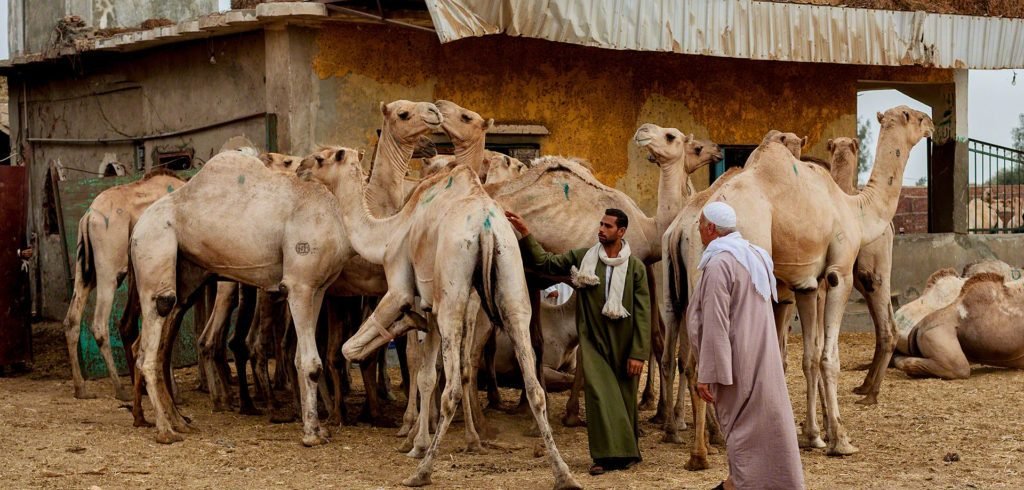NOT FOR THE FAINT-HEARTED, CAIRO’S FRIDAY CAMEL market is dusty, smelly, and unbelievably loud. It is held 22 miles (35 km) to the northwest of the city at Birqash. Proceedings start at first light and most of the business is done by nine, so it is advisable to get an early start. Public transportation is tricky, with no direct buses, and the best option is to arrange a taxi for the Whole morning.
Camels are not indigenous to Egypt. Their absence from Pharaonic art (which frequently depicts animals) strongly suggests that they were unknown in ancient Egypt. Historians believe that the Persians introduced the animals around the sixth century B.C. Since that time they have become indispensable as hard-working, low maintenance beasts of burden. Although camels are now bred in Egypt, hundreds are brought into the country each week from northern Sudan. First stop is Daraw, just north of Aswan, the largest camel market in Egypt, from where a great many of the beasts are sent on in trucks to Birqash.
There is a market here every day, but Friday attracts the largest number of traders and animals. Grand men in galabiyyas (gowns) 3 and turbans huddle on straw mats around trays of tea and discuss prices, While herders keep the bawling animals in line. Each camel is sold with a booklet issued by Ministry of Agriculture officials at Daraw, which includes its state of health, age, and place of origin. The latter can also be identified through tribal brand marks. According to herders, a good camel is characterized by a big hump and sturdy bones. Tests on teeth, gums, and eyesight usually only apply to the bigger animals, which are sold for farming; the smaller beasts usually go to the slaughterhouse. According to one herder, “They can be cooked like chickens.

